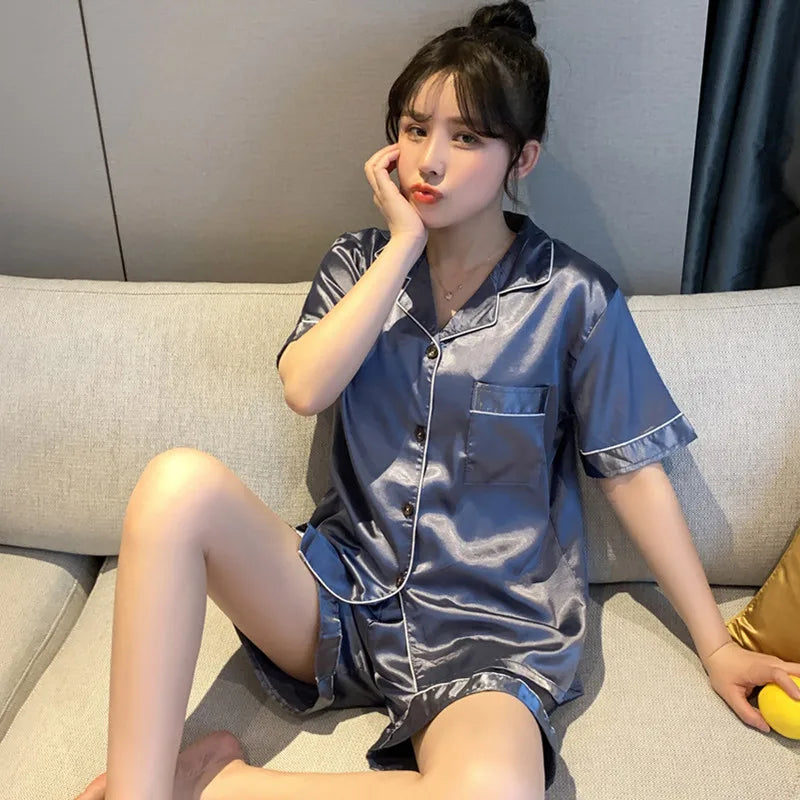Do You Put a Onesie Under a Sleep Sack? A Comprehensive Guide for Parents
Table of Contents
- Introduction
- Understanding Sleep Sacks
- Dressing Your Baby Under a Sleep Sack
- Seasonal Variations in Dressing
- Conclusion
Introduction
Navigating the world of baby sleepwear can feel like a daunting task for new parents. The concern for your little one’s comfort, safety, and warmth during sleep is paramount. With so many options available, you may find yourself asking: “Do you put a onesie under a sleep sack?” This question is not just about preference; it's about ensuring your baby sleeps soundly and safely.
Sleep sacks have gained immense popularity among parents as a secure alternative to traditional blankets, providing warmth while minimizing the risks associated with loose bedding. But understanding how to adequately dress your baby underneath these wearable blankets is crucial for maintaining the ideal sleeping environment.
In this blog post, we will explore the essentials of dressing your baby for sleep, focusing on the use of onesies and other options under sleep sacks. We’ll delve into the significance of temperature regulation, fabric choices, seasonal variations, and much more. By the end, you will feel empowered to make informed decisions about your baby's sleep attire, ensuring they are both comfortable and safe.
Together, let’s journey through the intricacies of baby sleepwear, examining what to consider when dressing your little one for a peaceful night’s sleep.
What You Will Learn
- The role of sleep sacks in a baby’s sleep routine and their benefits.
- How to choose the right clothing to wear under a sleep sack based on various factors such as age, season, and room temperature.
- The importance of fabric and fit for your baby's comfort and safety.
- Tips on how to monitor your baby’s temperature during sleep.
- Practical advice for dressing your baby under a sleep sack for different weather conditions.
With the right knowledge, you can create a cozy sleeping environment for your baby, ensuring they drift off to dreamland safely and comfortably.
Understanding Sleep Sacks
What is a Sleep Sack?
A sleep sack, also known as a wearable blanket, is a type of sleepwear designed to keep babies warm without the hazards associated with loose blankets. Sleep sacks are typically made of soft, breathable fabrics and come in various sizes and TOG ratings, which indicate their thermal insulation properties.
The primary purpose of a sleep sack is to provide a secure and cozy environment for your baby, mimicking the feeling of being swaddled while allowing for freedom of movement. They are especially beneficial for babies transitioning out of swaddling, as they offer a familiar sense of security while promoting safe sleep practices.
Benefits of Using a Sleep Sack
- Safety: Sleep sacks eliminate the risks associated with loose bedding, reducing the likelihood of suffocation and entanglement. They keep your baby securely wrapped, allowing them to sleep safely on their back.
- Comfort: The snug yet flexible design provides warmth without restricting movement, allowing your baby to kick and stretch comfortably.
- Temperature Regulation: Sleep sacks come in various TOG ratings, allowing you to select a suitable option based on the season and room temperature. This helps maintain an optimal sleeping environment for your baby.
- Ease of Use: Sleep sacks simplify bedtime routines, eliminating the need for fiddly blankets that can come undone during the night.
Understanding these benefits can help you appreciate the role that a sleep sack plays in your baby’s sleep routine and how to best utilize them for comfort and safety.
Dressing Your Baby Under a Sleep Sack
The Basics of Layering
When it comes to dressing your baby under a sleep sack, layering is key. The general rule of thumb is that your baby should wear one more layer than you would feel comfortable in. This approach allows for effective temperature control, essential for preventing overheating or chilling during sleep.
Factors to Consider
- Room Temperature: The ideal room temperature for a baby is typically between 68°F to 72°F (20°C to 22°C). However, you should adjust your baby's clothing based on the actual temperature in the room.
- Season: Consider the season when choosing clothing. In warmer months, lighter fabrics and fewer layers are appropriate, while colder months may require thicker materials and additional layers.
- TOG Rating: Familiarize yourself with the TOG rating of your sleep sack, which indicates its warmth level. A higher TOG rating means more warmth, making it essential to match the clothing underneath accordingly.
Options for Under the Sleep Sack
Now that we understand the importance of proper layering, let’s explore the different clothing options you can put on your baby under a sleep sack:
1. Onesies and Bodysuits
Onesies and bodysuits are excellent choices for layering under a sleep sack. They offer full coverage and are typically designed to fit snugly against your baby's body, which helps in regulating their temperature.
- Short-Sleeve Onesies: Ideal for warmer weather, providing a light layer without causing overheating.
- Long-Sleeve Bodysuits: Great for cooler temperatures, offering warmth while still being breathable.
When selecting a onesie, opt for soft, natural fabrics like cotton to ensure your baby's comfort, as synthetic materials can trap heat and irritate sensitive skin.
2. Pajamas
Lightweight pajamas can also be a suitable option under a sleep sack. Look for snug-fitting styles made from breathable materials. Avoid heavy or bulky pajamas that can cause overheating.
- Two-Piece Pajama Sets: These can be convenient for quick diaper changes and come in various styles and fabrics to suit seasonal changes.
3. Footed Pajamas
For colder seasons, footed pajamas can provide an extra layer of warmth for your baby. They keep little feet cozy while ensuring your baby remains comfortable throughout the night.
4. Temperature Monitoring
Regardless of what you choose to dress your baby in, it's essential to monitor their temperature during sleep. A simple way to check is to feel your baby’s back or chest. If they feel warm or sweaty, consider removing a layer; if they feel cool, an additional layer may be necessary.
Avoiding Overheating
Overheating is a significant concern when dressing your baby for sleep. Signs of overheating can include flushed cheeks, sweating, or rapid breathing. To prevent this, ensure that your baby is dressed in lightweight, breathable materials and that the sleep sack is appropriate for the current climate conditions.
Practical Tips for Dressing Your Baby
- Fit Matters: Ensure that whatever your baby wears under the sleep sack fits snugly but is not too tight. Loose clothing can pose safety risks, while overly tight clothing can restrict movement and comfort.
- Layer Wisely: Always opt for breathable fabrics and avoid heavy layers. If you’re unsure, it’s generally better to start with fewer layers and add more as needed.
- Be Mindful of Accessories: Avoid hats, mittens, or scarves inside the crib, as they can increase the risk of suffocation. Remember, babies regulate their temperature primarily through their heads.
Seasonal Variations in Dressing
Dressing for Summer
During the summer months, your baby’s sleep attire should focus on keeping them cool. A short-sleeve cotton onesie under a lightweight sleep sack is often sufficient.
- Opt for Breathable Fabrics: Choose sleep sacks made from breathable materials like cotton or bamboo, which wick moisture away and help regulate temperature.
- Room Conditions: If your baby’s room tends to be warm, consider using a fan or air conditioning to maintain a comfortable temperature.
Dressing for Winter
In winter, keeping your baby warm becomes a priority. In this case, a long-sleeve bodysuit or footed pajamas under a thicker sleep sack is advisable.
- Layering: You can add layers as necessary while ensuring that you’re not overdressing your baby. A good rule is to add a thin layer if the room is particularly cold.
- Fabric Choice: Opt for sleep sacks with higher TOG ratings to provide adequate warmth without the risk of overheating.
Conclusion
Understanding how to appropriately dress your baby under a sleep sack is essential for creating a safe and comfortable sleep environment. By considering factors such as room temperature, seasonal variations, and clothing materials, you can ensure your baby sleeps soundly and securely.
In summary, the answer to the question “Do you put a onesie under a sleep sack?” is a resounding yes, as long as you choose the right type of onesie—keeping in mind the room temperature and the season.
By layering wisely and monitoring your baby’s comfort, you can foster an ideal sleep routine that promotes restful nights for both you and your child.
FAQs
1. What is the best temperature for a baby to sleep in a sleep sack?
The ideal temperature is between 68°F to 72°F (20°C to 22°C). Adjust the clothing layers based on the room temperature.
2. Can my baby overheat in a sleep sack?
Yes, overheating is a risk if your baby is dressed too warmly. Monitor their temperature by checking their back or chest.
3. What types of clothes are best to wear under a sleep sack?
Lightweight, breathable options like onesies or footed pajamas made from natural fabrics such as cotton are ideal.
4. How can I tell if my baby is too hot or too cold under the sleep sack?
Check for flushed cheeks, sweating, or rapid breathing for signs of overheating. If your baby feels cool, consider adding a layer.
5. Should I use a sleep sack year-round?
Yes, sleep sacks can be used throughout the year, but choose the appropriate TOG rating and fabric based on the season and room temperature.
By following the guidelines in this article, you can ensure that your baby enjoys a comfortable and safe night's sleep, allowing both of you to rest easy.



